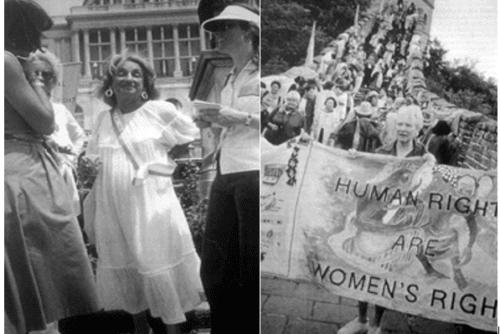Like Baker’s dance, jazz was seen as a particularly revitalizing musical form. The powerful tempo of the syncopated rhythms of jazz and the liberty of its improvised scores allowed for a freedom and immediacy that was particularly suited to an era in need of escape and healing. The metaphor of jazz as a drug resurfaces in the critical literature of the period. A “drug against suffering,” a “dispenser of joy,” jazz was seen as a vital healing agent in the troubled postwar climate. 1 For German film critic Siegfried Kracauer, jazz represented the present in its presentness. In an essay entitled “Renovierter Jazz,” Kracauer attributed to jazz the power both to induce forgetting and to instill life into war-weary bodies. 2 As Nancy Nenno points out, jazz as a “healing tonic” rejoined the host of drugs that provided a temporary haven from recent memories of the war. 3 In “The Negro Dance,” Levinson also conceived of the African American musical idiom as a narcotic, as a healing agent with both sedating and intoxicating effects. On African American dance, he wrote, “The primitive, human instinct is violently affected by such rhythmic insistence. The monotony of this measured tramping, the symmetry of its pattern, has the effect of a narcotic, while its gradual acceleration brings about a sense of exhilaration amounting to a positive ecstasy” (Levinson 1991, p. 72).
The impact of this new “drug” on French culture was so powerful that jazz, often described as an invading or conquering force, opened up heated debates in intellectual and musical circles. On July 1, 1925, music critic André Schaeffner and ethnomusicologist André Cœuroy launched a “Jazz Survey” in Paris-Midi. The survey, which opened with the statement, “The jazz band has invaded Europe,” posed a number of questions concerning the autonomy and influence of jazz, of which the first was: “Do you consider jazz to be ‘music’?” 4 In a column entitled, “Jazz Before the Judges,” Paris-Midi published 44 of the responses drawn from figures across the music industry, including musicians, composers, singers, and critics. Responses ran the gamut, from jazz as an anti-musical abomination (“‘Jazz??,'” protests baritone Lucien Fugère, “An abomination! A horror!!! The negation of musicality”) to jazz as a “super-music” effecting an artistic revolution. 5 On the whole, critics found jazz to be an influential popular form of music whose artistic merits derived primarily from rhythm and whose authenticity lay in its African or African American roots.
As with the dance to which it gave birth, jazz had its detractors. For some, jazz music was seen as pure noise. One critic, applying the popular denomination of bruiteur to jazz musicians, writes, “Dadaists of music, they bustle about […] to discover everything that bad international taste has produced, and import it to the heart of the capital [….]” 6 Jazz seemed to capture the pulse of modernity itself, its temporal simultaneity, its tumult, its dynamism and its unceasing energy. In a 1927 article that appeared in Débats, significantly entitled “The Orchestra of Dr. Moreau,” the theater critic Gustave Fréjaville considered the modern sounds of jazz to be the sounds of the machine age and an echo of the wailing and weapons of war:
Suddenly, an astonishing organized din responded to the clamor of the sirens, to the roar of the Gothas, plucking, grating, scratching, shuddering, the rattle of drumsticks, the rumble of the drum, the cries of the trumpets and horns, the ringing of metallic snare drums, the noise of chains, rods and gongs, brass calls, an entire sonorous production of an ingenious complexity.
A la clameur des sirènes, au ronflement des gothas répondit tout à coup un étonnant vacarme organisé, pincements, grincements, grattements, frémissements, crépitement de baguettes, roulements de tambour, cris de trompes et de klaxons, tintements de timbres métalliques, bruits de cha”nes, de tringles et de gongs, appels cuivrés, toute une mécanique sonore d’une complication ingénue. 7
A French doctor warned against the harmful effect on the nervous system of such a cacophony: “[…] when we are dealing not with symphonic music but JAZZ,” he claimed, “we can expect the worst repercussions on the nervous system.” 8
- Arthur Hoérée, “Le jazz et le disque (essai critique et historique),” L’Edition musical vivante, no. 46 (Dec. 1931), pp. 7-15 (in Martin and Roueff 2002, p. 295).[↑]
- Siegfried Kracauer, “Renovierter Jazz,” in Schriften, vol. 2: Aufsätze 1927-1931, ed. by Inka Mülder-Bach (Frankfurt am Main: Suhrkamp, 1990), pp. 390-392.[↑]
- Nancy Nenno, “Femininity, the Primitive, and Modern Urban Space: Josephine Baker in Berlin,” in Women in the Metropolis, ed. by Katharina von Ankum (Berkeley, Los Angeles, and London: University of California Press, 1997), p. 154.[↑]
- André Schaeffner and André Cœuroy, “Enquête sur le jazz band,” Paris-Midi, 8 mai-1er juillet, 1925 (in Martin and Roueff 2002, p. 182).[↑]
- Lucien Fugère’s response is drawn from Martin and Roueff (2002), p. 199. Michel Georges-Michel writes, “Is jazz music? Not long ago there were people who cried: ‘Wagner, Debussy, it’s not music.’ After this, who would dare to venture to deny jazz. It’s a super-music [sur-musique] which stands head and shoulders even above Stravinsky” (in Martin and Roueff 2002, p. 183).[↑]
- Louis Vuillemin, “Concerts métèques…,” Courrier musical, 1er janvier 1923 (in Martin and Roueff 2002, p. 170).[↑]
- Gustave Fréjaville, “L’orchestre du Dr. Moreau,” Débats, 9 juillet 1927. Quoted in Jeffrey Jackson, “Making Enemies: Jazz in Inter-war Paris,” French Cultural Studies, 10:29 (June 1999), p. 192.[↑]
- Quoted in André Mauprey, “Le jazz peut-il rendre fou?” Jazz-Tango-Dancing (August 1931). See also Jackson (1999), p. 193.[↑]



